2021 AWARD WINNER | Student Award at Art in Clay Windsor
Posted on - 25th August 2021
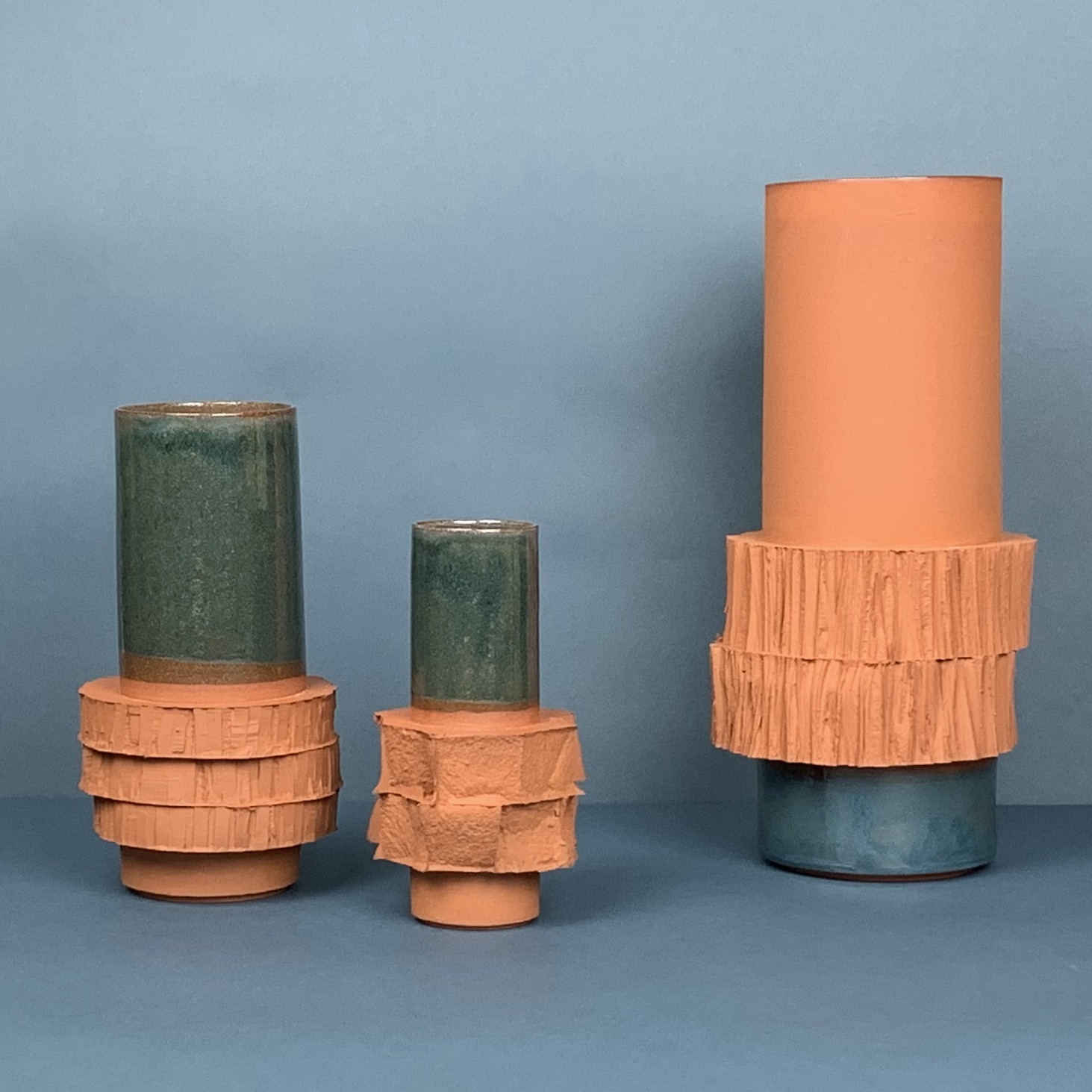
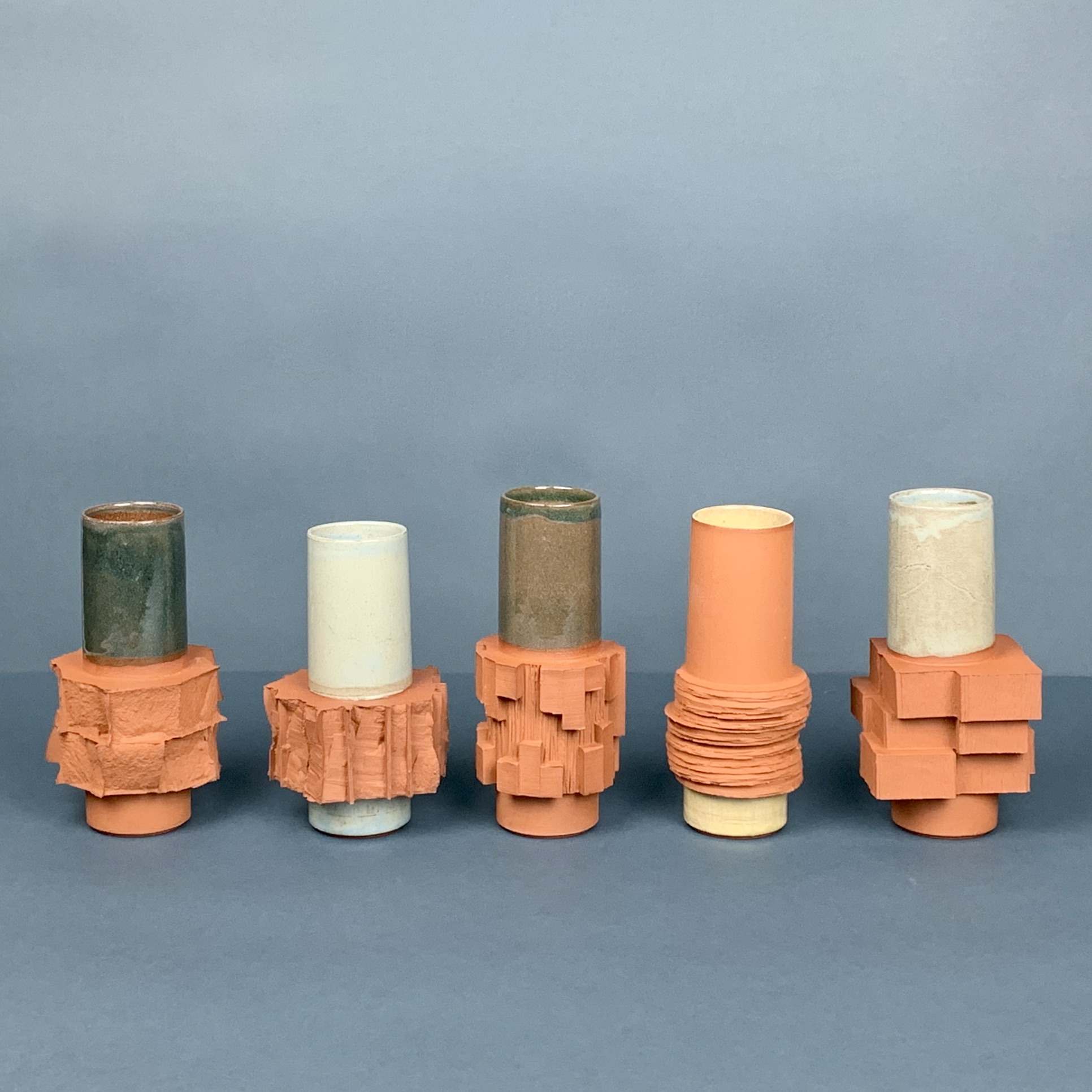
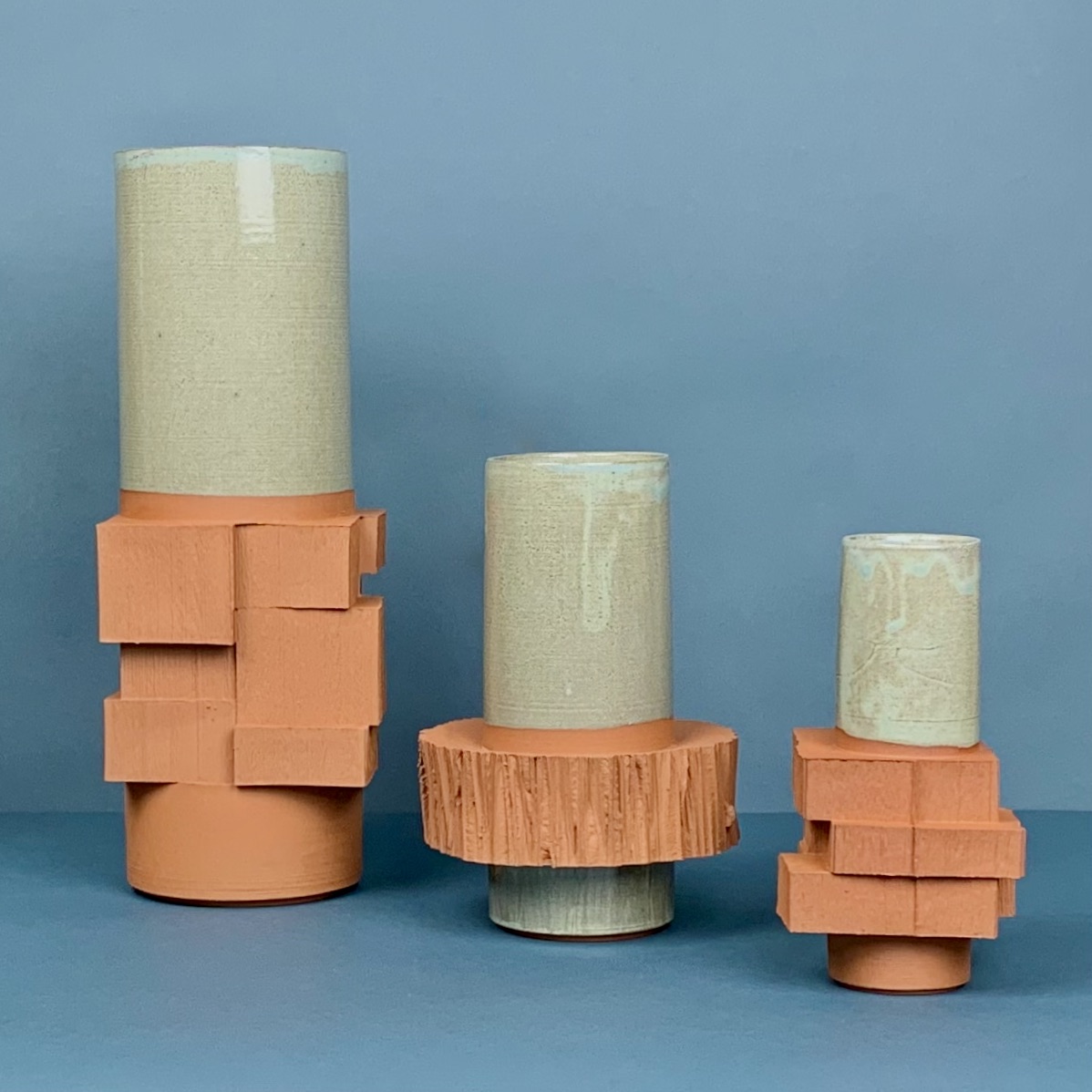
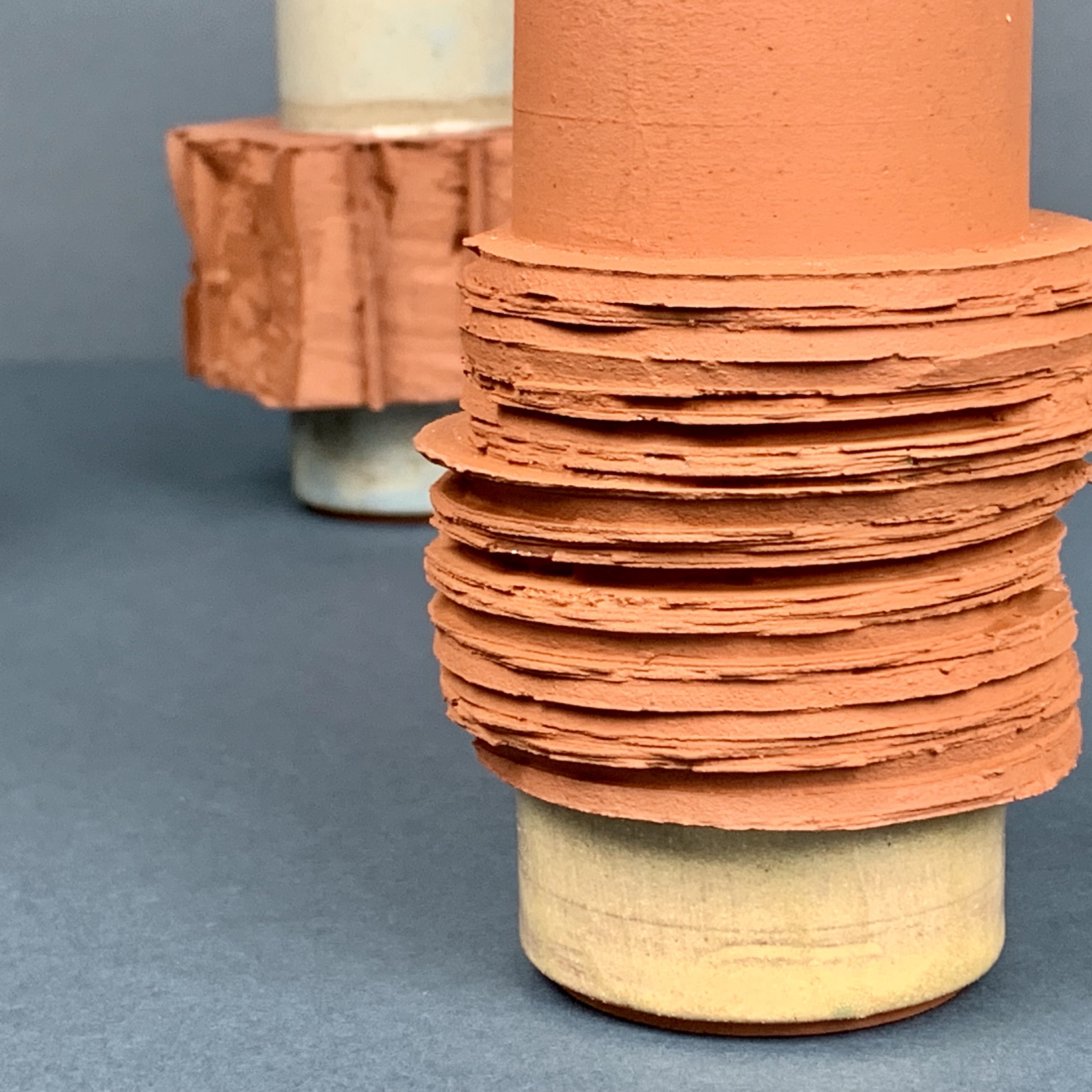
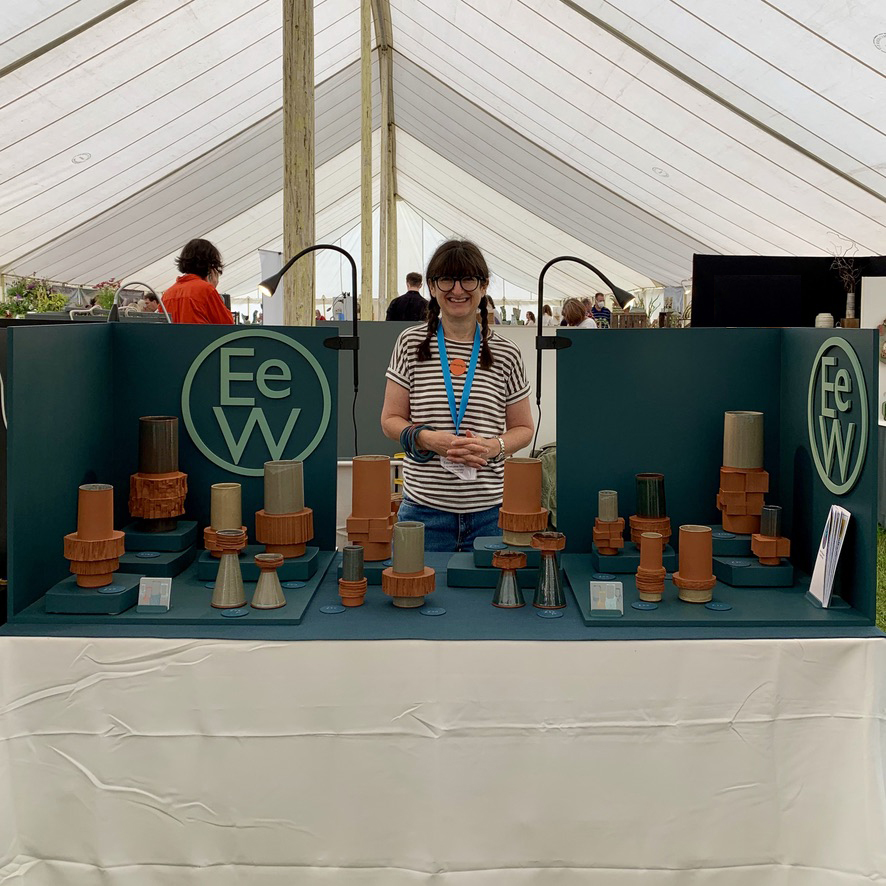
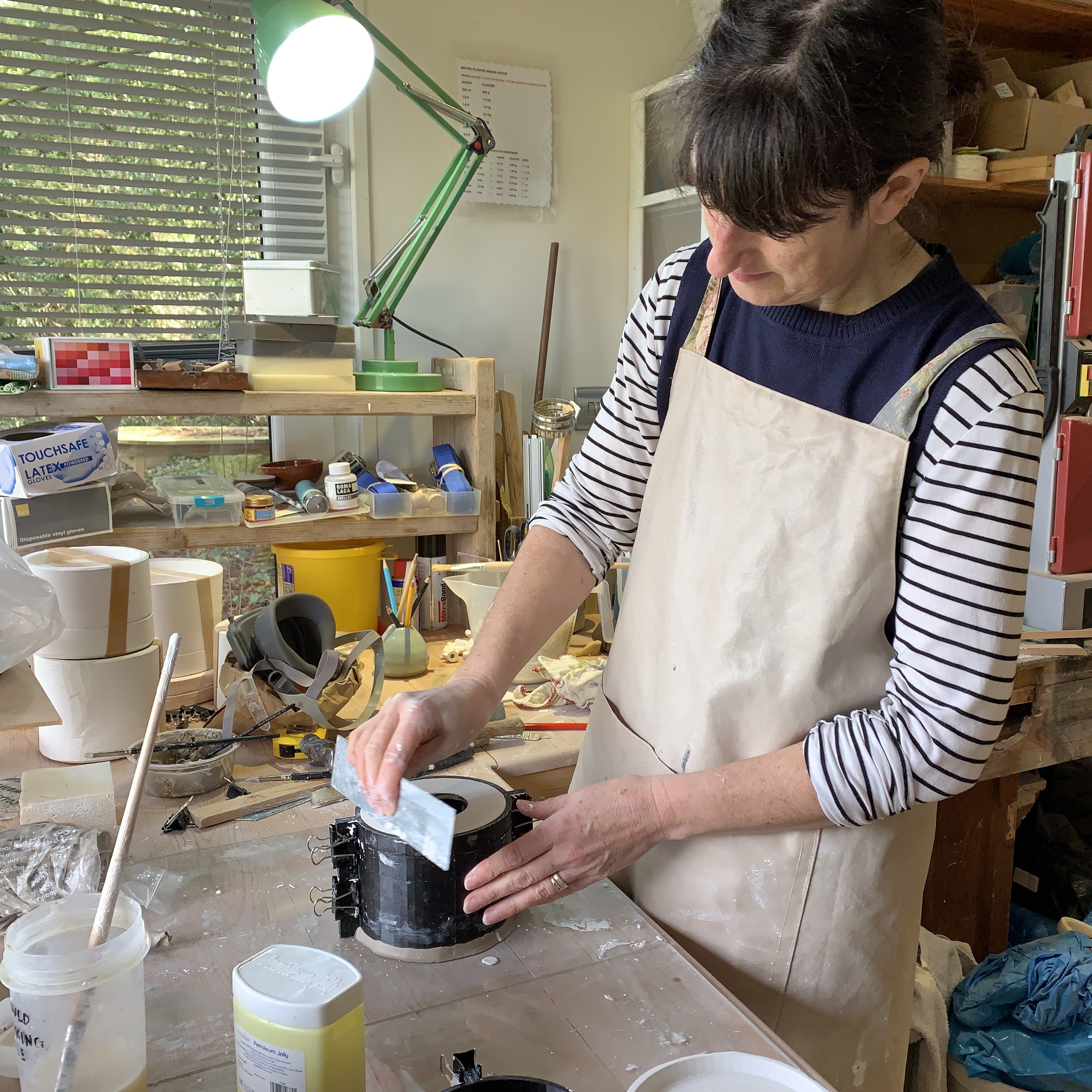
EMMA WESTMACOTT
Staffordshire University | MA Ceramic Design (Distinction)
Instagram | Facebook | emmawestmacottstudio.co.uk
Describe your first encounter with clay?
My parents live in an old house in Cheshire that was built within the grounds of a brick making site ( the house opposite is called Brick Bank Cottage). I can clearly remember digging clay out of the ground with my hands next to my sandpit and making rudimentary pots that my sister and I would ‘cook’ in the sunshine. I always loved getting my hands dirty, and the feel of the clay as I squeezed it between my fingers as a child is a memory I cherish. During the first lockdown when I had to complete my MA work at home, I got my dad to dig up a bucket of the clay and I processed it, tested and fired it, producing a couple of very interesting pieces.
Why did you choose ceramics?
I went back into education in 2011. I had always wanted to follow in the footsteps of my Aunt who was an artist, get a degree in a creative subject, and establish a creative career. But as a school leaver, things didn’t work out that way. Initially, once back at college, I had imagined it would be a printmaking degree. I love the way that you can prepare a printing plate thoroughly and carefully, but it’s only when you put it through the printing press that the results appear. The final result is almost taken out of your hands and revealed to you. But doing ceramics modules on my diploma I realised I could have that same feeling of excitement and expectation via the kiln firings and get my hands messy with clay at the same time! Since being introduced to slip casting though, during my HND, I have found ways of getting that same feeling at other stages of my practice too. I also revel in the mindful, repetitive processes within casting. It’s like therapy and incredibly calming.
Where do you find inspiration? Places, people, objects, music...
My work has been born out of a love of mid 20th century design aesthetics. Modernist design surrounded me as I grew up in the 1970s and 80s, from the architecture and interior surfaces of the school I went to, to the cool prints of my grandmother’s clothes and the textured glassware my parents used. At the time, I was completely impervious to it all, but as I have grown older, I have a kind of nostalgic love for it all that rekindles childhood memories.
I have a passion for the beautiful ‘béton brut’ concrete formwork surfaces seen in Brutalist architecture and this concept, along with the simplicity and honesty of the forms and materials in the buildings, are what influence my work. I am constantly exploring new ways of creating textural surfaces which, in my most recent work, combines with a simple vase form to emphasise the contrast.
What are the tools of your trade that you can't do without?
There are so many! I do love trying to track down second hand tools. Things like my vintage splitting knife and my surface gauge are really important to me. I always feel as if there’s a history within them that connects me to the past. And where I can, I make my own. So the tool that’s probably in my hand the most is one of my trimming knives made from an old hacksaw blade. But I do love sponge sticks - they’re just so useful!
What is a typical day in the studio like?
A typical studio day starts with a coffee and a list of jobs being drawn up. I keep a daily diary of things to do, then later, update it with the things I actually did, and it’s also where I record a lot of my problem solving. I’m not very good at tidying up at the end of the day, usually because I’m shattered, so there might be a bit of cleaning up to do. But apart from that, there isn’t really a typical studio day. I might be sorting out my moulds ready for casting, or planning new moulds to be made from plaster, or fettling pieces I’ve cast already. I feel like most days recently I’ve been unloading and loading the kiln too but that goes in phases as I let the work build up a bit before I get into my firing routines. Radio 4 is usually keeping me company throughout the day and then later on, tiredness can hit me very suddenly so I’ll head back across to the house to catch up on my social media and emails.
What do the next 12 months have in store for you?
Having had a really successful show at Art in Clay, I feel like the next 12 months are going to get really busy. I’m already thinking about planning for shows next year, but before that I have my Masters Degree show which is being hosted by the British Ceramics Biennial in September and October. I intend to start selling work via my website which went live very recently, and I have started to make connections with interested galleries which I’m very excited about.
What advice do you have for those currently studying ceramics in further education?
Having had to complete my MA during the first lockdown, I really feel for students on creative courses trying to keep going at the moment. It’s been a very tough time. I think it’s really important - especially as things are at the moment - to keep listening to your own inner voice and follow your own passions. Your work and ideas need to be coming from within you and while it’s very important to listen and consider what other people say to you about your work, it will only be genuinely yours if it comes from what you are passionate about. Your ideas and what you do needs to sustain you, keep you inspired and make you feel happy.

